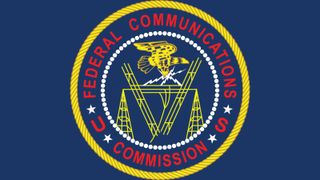FCC Seeks Comment on ATSC 3.0 Signal Extension

The FCC voted unanimously to adopt a Notice of Proposed Rulemaking seeking comment on a proposal to allow broadcasters greater flexibility in using distributed transmission systems (DTS) to deliver new ATSC 3.0 signals.
The FCC said, and broadcasters agree, that allowing that flexibility with the new advanced TV broadcast standard will get those signals to hard-to-reach viewers, improve indoor reception and be more efficient with the spectrum, a big priority for the FCC.
The FCC's proposal is responsive to a petition by the National Association of Broadcasters and America's Public Television Stations to change the current DTS rules, which were adopted during the last transmission sea change--to digital, to allow for single frequency networks (the DTS systems comprise "two or more transmission sites located around a station’s service area, each using the same RF channel).
The item approved Tuesday (March 31) seeks comment on whether and how to allow signals to exceed a TV station's service area by more than the current de minimus (minimal) amount. The FCC also wants input on the possible impact of extending the signals on other uses, including low-power TV stations, and whether to extend the signals of current ATSC 1.0 signals as well. Broadcasters currently use translators to boost their signals at the fringes of the service area and in other areas where terrain weakens a signal, but translators usually use a different channel, while DTS use the same channel.
Computer companies, most notably Microsoft, have argued against the rule change, saying it could be "catastrophic" to its rural broadband rollout and arguing broadcasters could get what they want through existing rules. Microsoft is using the "white spaces" between TV signals to deliver it.
“NAB applauds the Commission for proposing deployment of single frequency networks allowing broadcasters to better serve viewers while preserving our commitment to localism," said NAB president Gordon Smith. "These SFNs could improve service throughout a station’s coverage area and, in particular, near the edge of the coverage area. SFNs could also improve mobile reception and allow more efficient use of broadcast spectrum. FCC staff is to be commended for moving this item quickly, and we look forward to establishment of final rules."
“America’s Public Television Stations applaud the action taken today by the FCC, a welcome endorsement of changes in the current rules that will allow broadcast television stations to unlock the benefits of Next Gen TV through DTS operations that better serve their viewers while preserving their commitment to localism and avoiding interference issues,” said APTS president Patrick Butler. “These small changes will improve coverage throughout local public television stations’ service areas and improve their ability to offer robust mobile service. It will also enhance spectrum efficiency by reducing the need for television translators operating on redundant channels."
Broadcasting & Cable Newsletter
The smarter way to stay on top of broadcasting and cable industry. Sign up below
Contributing editor John Eggerton has been an editor and/or writer on media regulation, legislation and policy for over four decades, including covering the FCC, FTC, Congress, the major media trade associations, and the federal courts. In addition to Multichannel News and Broadcasting + Cable, his work has appeared in Radio World, TV Technology, TV Fax, This Week in Consumer Electronics, Variety and the Encyclopedia Britannica.

